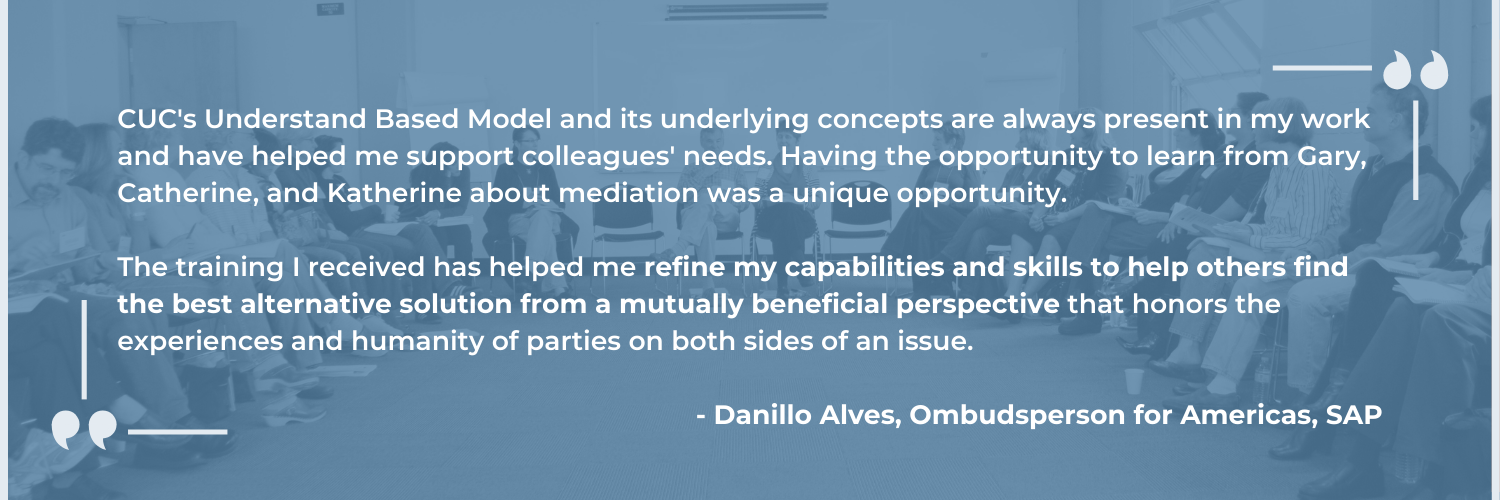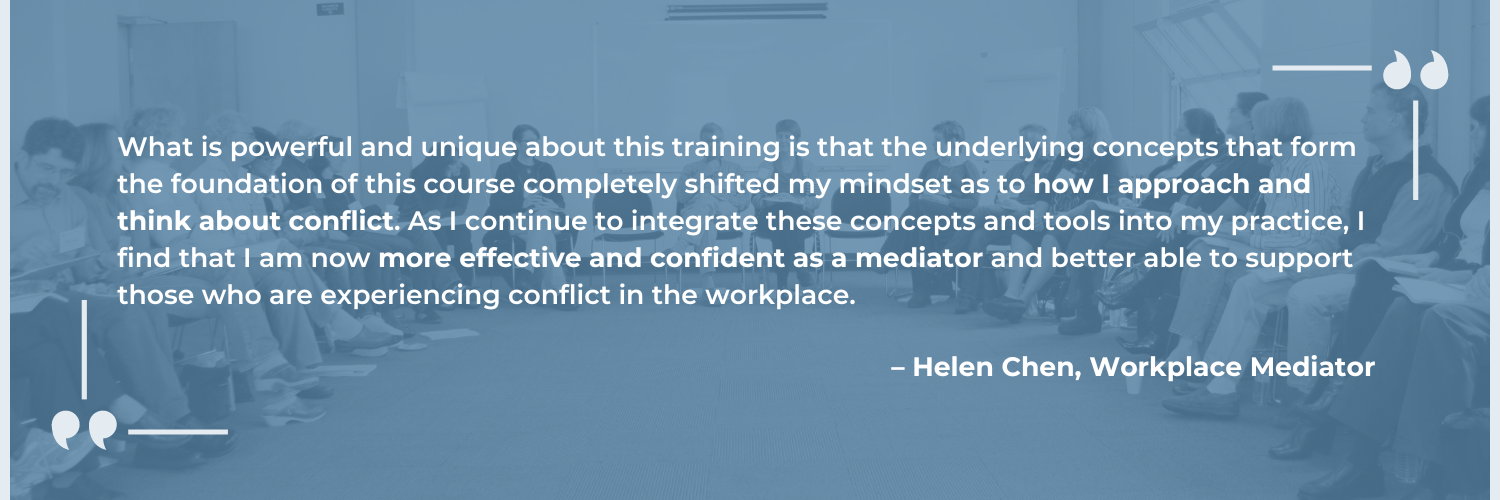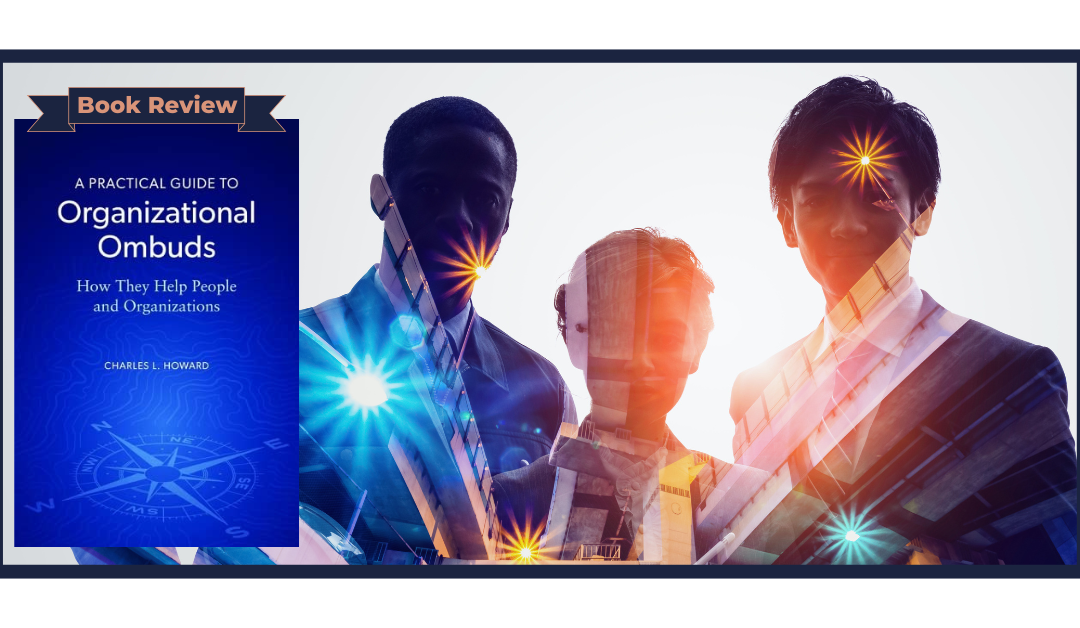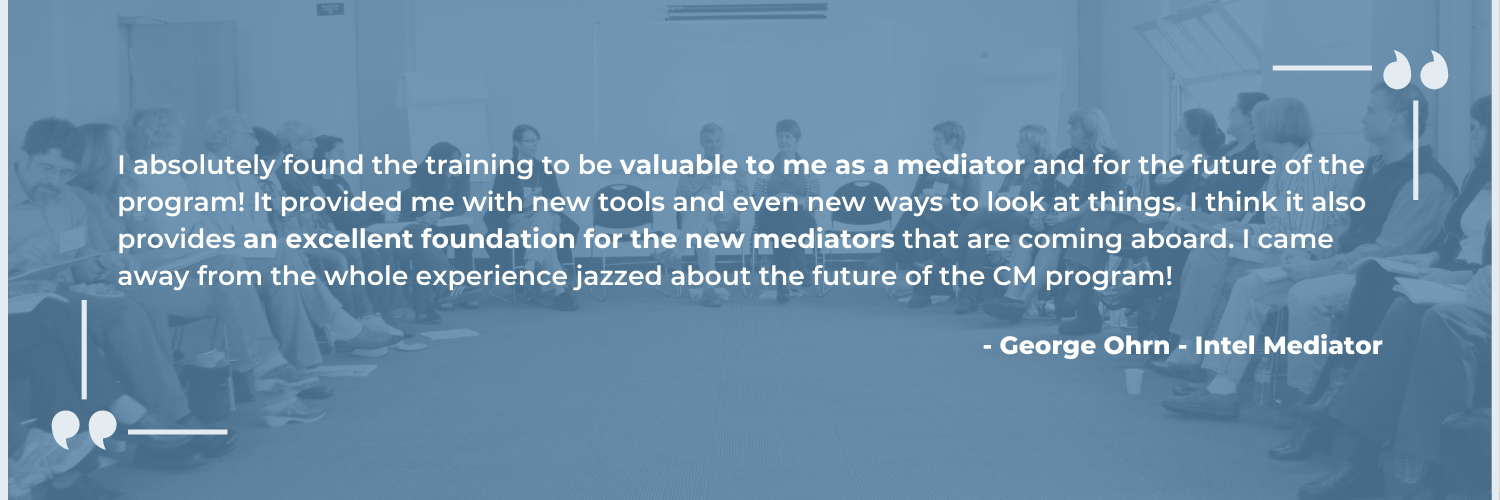
TRANSFORM WORKPLACE CONFLICTS INTO OPPORTUNITIES THAT BOOST PRODUCTIVITY AND STRENGTHEN CULTURE
Previous Training Partners

Please get in touch with [email protected] if you have questions about upcoming programs, custom training, or large group bookings.
Internal conflicts between staff members are expected in a large company with hundreds or thousands of employees. If left unaddressed, these conflicts can create ripple effects throughout the organization, damaging the individuals and the overall workplace environment. A fictional case illustrates these challenges: Two senior employees, Jane and Alex, start experiencing friction due to competing project priorities. What begins as a simple miscommunication escalates into a profoundly personal conflict, with both parties feeling disrespected and undermined.
Impact on Productivity
The first visible impact is on productivity. Jane and Alex, who were once efficient team leaders, now spend more time arguing and collaborating less. This tension affects their decision-making processes, and projects stall as they fail to reach consensus on important issues. Team members under their management also feel stressed, leading to missed deadlines and lower overall output. The situation worsens when both begin avoiding direct communication, instead relying on passive-aggressive emails or involving middle management unnecessarily, further delaying progress.
Workplace Culture and Morale
Beyond productivity, the workplace culture takes a significant hit. Employees who once looked up to Jane and Alex for leadership now feel torn and disillusioned. Sides are taken, with some employees aligning themselves with Jane and others with Alex, which fractures team cohesion. The once collaborative work environment is now rife with gossip, anxiety, and mistrust. The company’s teamwork and open communication culture crumble as the conflict festers. Junior staff, in particular, are affected as they witness the inability of senior management to resolve what seems to be a personal dispute. This creates an atmosphere where people believe interpersonal conflicts are inevitable and unsolvable within the company structure.
Effect on Employee Retention and Longevity
Over time, the longevity of employees at the company becomes threatened. Good employees, particularly those in Jane’s and Alex’s teams, begin considering their options elsewhere, dissatisfied with the toxic atmosphere. Jane and Alex are at risk of burnout, with the conflict adding to their emotional and mental strain. If left unchecked, this situation could lead to one or both key employees leaving the organization, creating a costly void requiring extensive resources. Moreover, replacing such experienced staff is often challenging, and the damage to employee morale can have long-lasting effects, even if replacements are found.
Outcome 1: No Meaningful Intervention
In a scenario where the company provides no meaningful intervention, the outcome is grim. Jane and Alex may continue their feud until one of them decides to resign, or worse, the company might be forced to intervene punitively, such as transferring one of them to a different department. While this may seem like a resolution, the damage to the workplace culture and the loss of productivity would remain. Other employees might perceive the conflict as being handled poorly, reinforcing that the company does not prioritize or effectively manage internal issues. This could lead to higher turnover rates as more employees become disengaged or leave to seek healthier work environments.
Outcome 2: Conflict Resolution Training Using the Understanding-Based Approach
However, if the company instituted a workplace conflict resolution program grounded in the understanding-based approach, the outcome could be significantly different. This approach focuses on bringing both parties together to understand each other’s perspectives, needs, and underlying concerns before attempting to find a solution. Rather than treating the conflict as a problem to be “fixed” by management or third parties, the approach emphasizes the importance of the conflicting parties being actively involved in resolving their issues.
If Jane and Alex were to participate in such a program, the first step would involve each of them expressing their concerns in a structured setting, perhaps with the help of a neutral facilitator. The goal would not be to immediately solve the conflict but to ensure that each person feels heard and understood. The loop of understanding, a key feature of this method, would allow Jane and Alex to reflect on what they have heard from each other and then articulate their own experiences, fostering empathy and breaking down defensive barriers.

Shifting Workplace Culture Through Conflict Resolution Training
This deeper understanding creates space for exploring options that meet both parties’ needs instead of entrenched positions. In a safe environment where their perspectives are validated, Jane and Alex may begin to see areas of common ground, such as their shared interest in the company’s success and the well-being of their teams. This process helps them move beyond the specifics of their conflict to address the underlying issues fueling their discord, such as unmet expectations, feelings of disrespect, or a lack of clarity in their roles.
The benefits of such an approach go beyond just resolving Jane and Alex’s specific conflict. It also fosters a culture of open communication and mutual respect within the company. By institutionalizing conflict resolution training, the company signals to all employees that interpersonal issues are important and that there are constructive ways to handle them. This can have a powerful impact on the broader workplace culture, encouraging employees to address problems early before they escalate into serious conflicts. It also demonstrates that the company is committed to the well-being of its staff, which can improve employee engagement and reduce turnover rates.
The Long-Term Benefits of a Conflict Resolution Program
Moreover, conflict resolution skills learned through such a program can be applied by employees in various contexts, further enhancing collaboration and productivity across the board. For example, Jane and Alex might emerge from this process not only with their specific conflict resolved but also with a deeper appreciation for each other’s working styles and challenges. This, in turn, can enhance their future collaboration and serve as a model for other employees dealing with their disputes.
In conclusion, the impact of unresolved internal conflicts on productivity, workplace culture, and employee longevity can be severe, but companies have the power to change that trajectory. Implementing a conflict resolution program, particularly one using the understanding-based approach, allows for deeper, more sustainable resolutions that benefit not just the individuals involved but the entire organization. Such proactive measures can transform a toxic work environment into one where differences are managed constructively and employees feel supported in their growth and interactions.


A Practical Guide to Organizational Ombuds: How They Help People and Organizations by Charles L Howard
Charles L. Howard’s A Practical Guide to Organizational Ombuds: How They Help People and Organizations offers a thoughtful and practical exploration of the ombuds role, making a compelling case for why organizations need independent, confidential, and informal...

Building a Culture of Understanding: How Conflict Resolution Transforms Workplaces and Drives Success
Unresolved conflicts in the workplace, be it interpersonal disputes or organizational misalignments, can inflict significant harm on employee morale, operational efficiency, and business outcomes. These conflicts, often rooted in clashing perceptions, goals, or values...
Upcoming Training Programs
16-Hour Advanced Matrimonial Mediation Training (East Coast)
June 26 at 3:00 pm - June 28 at 1:00 pm EDT

